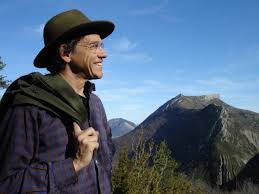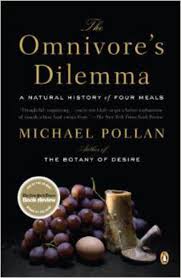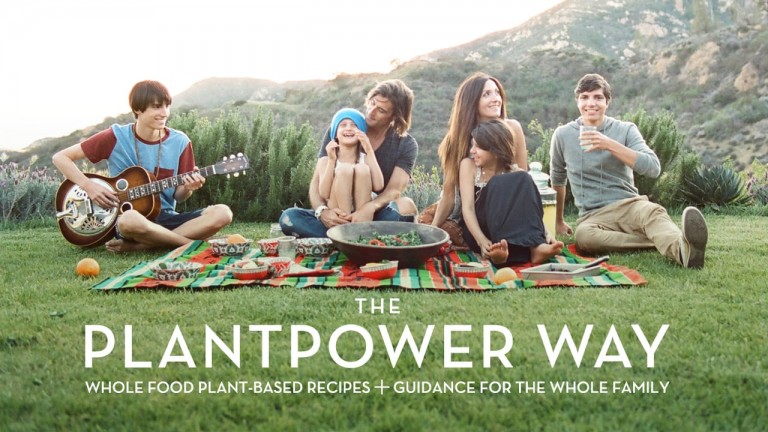We have recently been thinking about the kinds of people who would be most receptive to including wild food in their diet.
This is partly because we are hoping to reach more people with the message of wild food and partly because as a business we need to sell more wild food in order to make our business profitable. In fact, the two are really one concern since anyone who buys wild food is being reached by the message and sooner or later will begin to forage for themselves, which is a big part of the message. However, just eating wild food is also a big part of the message, because wild foods are highly nutritious. In other words, wild food is good for you.
In fact, before I go on allow me to sort-of digress and articulate clearly that overall message about wild food and foraging to which I refer. It is summed up in two simple phrases: “wild food is good!” and “foraging is good!”.
Actually I am watering the message down. Let me go at it again: “wild food and foraging are very good indeed!!!”.
Allow me to explain…
Wild food and foraging are: Good for land; good for the biodiversity of tended and wilder places; good for mental health; good for community engagement with people and places; good for teaching kids and adults alike about ecology and wildlife, flavour and nutrition; good for resilient, food sovereign local food systems; good for individual human bodily health.
 But its like when French foraging veteran Francois Couplan spoke at the first Mad Symposium about just how many common delicious nutritious wild food plants there are to eat and concluded with the question “How is it you didn’t know this?”.
But its like when French foraging veteran Francois Couplan spoke at the first Mad Symposium about just how many common delicious nutritious wild food plants there are to eat and concluded with the question “How is it you didn’t know this?”.

I recently found myself caught in the maelstrom of the rush hour crowd on Oxford street and realised that possibly not one person in the crowd surrounding me knew this. I found myself wondering, how do we reach them? This led to the thought I started this blog with: who might be easiest to reach? Ross (Forager Ltd general manager and frequent fellow blogger on this page) and I came up with quite a list of people who might already be thinking or living along lines which might point towards foraging and wild food. Healthy eaters, foodies, raw food and local food enthusiasts, people seeking the “glow”, people who want to reconnect with land, people with concerns about global food systems, especially those who have read
Eat food, not too much, mostly plants…
 Michael Pollan’s Omnivore’s Dilemma which describes a meal comprised of hunted and gathered wild food elements as the perfect meal… But two groups stuck out as being people whose diet was crying out for the inclusion of wild foods more than most others: vegans and paleo-diet people!
Michael Pollan’s Omnivore’s Dilemma which describes a meal comprised of hunted and gathered wild food elements as the perfect meal… But two groups stuck out as being people whose diet was crying out for the inclusion of wild foods more than most others: vegans and paleo-diet people!
Now these are strange bedfellows indeed… Vegans of course shun animal products of any kind, mostly out of ethical concerns for the wellbeing of animals. Whereas paleo-diet people can potentially eat more animal products than most, since they emphasise the hunter gatherer’s consumption of meat, feel more comfortable than most with eating saturated fat and shun grains and plant derived refined starch based foods. But both dietary choices ultimately point very strongly to the consumption of wild foods….
 Vegans, despite the admirable commitment they make to eating only one group of living things: plants (ok fungi as well, plus marine algae some of which are not strictly plants, and plus whatever organisms might supply the culture in fermented plant foods….), find themselves in a herbivore’s dilemma. Having limited themselves to a certain category of foods, they need to discover the greatest possible diversity of foods within that category. But limited as they are to obtaining foods from the existing agricultural food system, there are a limited (albeit growing) number of plants on offer. Now as soon as attention is turned away from agriculture and directed to the cornucopia of wild food plants on offer, this narrow bandwidth suddenly becomes a broad spectrum. In the UK, which does not have a particularly extensive flora (around 4,000 compared with 40,000 in Brazil!) we have around 400 edible species of plants.
Vegans, despite the admirable commitment they make to eating only one group of living things: plants (ok fungi as well, plus marine algae some of which are not strictly plants, and plus whatever organisms might supply the culture in fermented plant foods….), find themselves in a herbivore’s dilemma. Having limited themselves to a certain category of foods, they need to discover the greatest possible diversity of foods within that category. But limited as they are to obtaining foods from the existing agricultural food system, there are a limited (albeit growing) number of plants on offer. Now as soon as attention is turned away from agriculture and directed to the cornucopia of wild food plants on offer, this narrow bandwidth suddenly becomes a broad spectrum. In the UK, which does not have a particularly extensive flora (around 4,000 compared with 40,000 in Brazil!) we have around 400 edible species of plants.
Many of these (e.g. plantain, mallow, nettles) are high in protein, much higher than most cultivated food plants; several (bristly ox-tongue, sow thistle, common purslane) are high in omega3 oils. With regard to vitamins A and C, as well are minerals such as calcium, most wild food plants are off the scale in relation to the nutritional composition of their cultivated counterparts. And to explore wild plant health benefits in just a little more depth, the two qualities many people find challenging with some wild foods are in fact indicators of their healthsomeness. The coarseness of some of the leaves (easily overcome by chopping or blending if you don’t want to chew more) is of course indicative of dietary fibre, which most of us don’t eat enough of. Whereas bitterness is a quality which is oddly associated with a very diverse range of otherwise unrelated chemicals many of which nonetheless are very beneficial to health- such as the anthocyanins found in chocolate to give an example of one most of us, wild fooders or otherwise, consume often. Shockingly, juice manufacturers are currently developing ways of removing such health giving compounds from fruit juices so as to make them more acceptable to sugar drunk and bitterness (challenged?) averse palates in order to sell more juice. Anyway, the message is clear: 1. vegans need more species of plants to eat 2.there are plenty more plants they could eat once you look to the wild and 3. These plants are more nutritious than the comparatively few cultivated ones currently available to non-wild food eating vegans!
What about the paleo-diet crew? The paleo-diet is evidently based on thinking about our ancestral diet, before the advent of agriculture. The main point being that our bodies are pretty much (give or take a few minor adjustments in the last few thousand years: a twinkle in an eye in evolutionary terms) the same as theirs: evolved to thrive on the same kind of diet as theirs. So the ravages of refined carbohydrates on the modern body are shunned; grains and potatoes- both heavy in too-easily digested starch- are avoided; sugar is off the menu; meat, seeds, nuts, eggs and slow release, carb heavy vegetables are where it’s at. But for all the proliferation of paleo-products, paleo outlets and paleo-adherents there is something distinctly un-paleo about the origin a practically all (the main exceptions being wild fish and brazil nuts) the foods folk in this dietary community are eating: they are produced by an industrial agricultural food system. Our ancestors ate only wild plants, and whilst paleo people benefit from eating carefully selected plant foods which do not provide an unhealthy sugar rush, they are still missing the most important trick involved in really following the diet of our Palaeolithic ancestors and eating wild. Palaeolithic people consumed a great diversity of food plants, each of which contained much higher all round nutrient levels than practically all (kale and carrots being notable exceptions) of the much smaller number of cultivated food plants available.
 Now all this being said, I am no expert on vegan food. I am also from being well versed in paleo diet thinking. However, a friend of mine Tor Norretranders who is, has agreed to write a guest blog for us next week. This should be really interesting, because Tor is the author of two books in Danish on this subject. The first is pretty much devoted to nutrition and health from a paleo-like perspective. The second takes these thoughts to their logical conclusion and looks at wild food, from the point of view of human nutrition but also as a food system that works with the flow of wild nature instead of damaging it. His Mad symposium talk ‘From wild to tame and back again’ is based on the second book. (Sample quote re refined starch based diets: “No monkey would eat that shit!”)Tor’s writings were pivotal in getting the paleo movement started in his native Denmark, which is now so advanced that the 7-11 chain there has overhauled its range of eatables to include a full range of paleo inspired items, rather than just the usual sandwiches. Anyway I said all that to say this: through this and the coming guest blog we are hoping to generate pre-orders for an English language edition of these books in a single volume. These pre-orders will then cover the cost of translation so that the book becomes widely available to English speakers. I for one am chomping at the bit to read it, because Tor’s talk for me articulates beautifully why wild food and foraging are both so important and so……GOOD!
Now all this being said, I am no expert on vegan food. I am also from being well versed in paleo diet thinking. However, a friend of mine Tor Norretranders who is, has agreed to write a guest blog for us next week. This should be really interesting, because Tor is the author of two books in Danish on this subject. The first is pretty much devoted to nutrition and health from a paleo-like perspective. The second takes these thoughts to their logical conclusion and looks at wild food, from the point of view of human nutrition but also as a food system that works with the flow of wild nature instead of damaging it. His Mad symposium talk ‘From wild to tame and back again’ is based on the second book. (Sample quote re refined starch based diets: “No monkey would eat that shit!”)Tor’s writings were pivotal in getting the paleo movement started in his native Denmark, which is now so advanced that the 7-11 chain there has overhauled its range of eatables to include a full range of paleo inspired items, rather than just the usual sandwiches. Anyway I said all that to say this: through this and the coming guest blog we are hoping to generate pre-orders for an English language edition of these books in a single volume. These pre-orders will then cover the cost of translation so that the book becomes widely available to English speakers. I for one am chomping at the bit to read it, because Tor’s talk for me articulates beautifully why wild food and foraging are both so important and so……GOOD!
